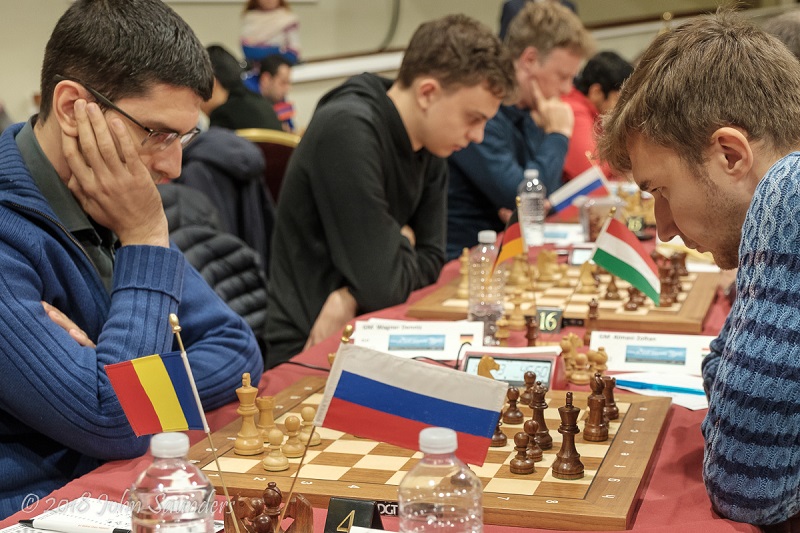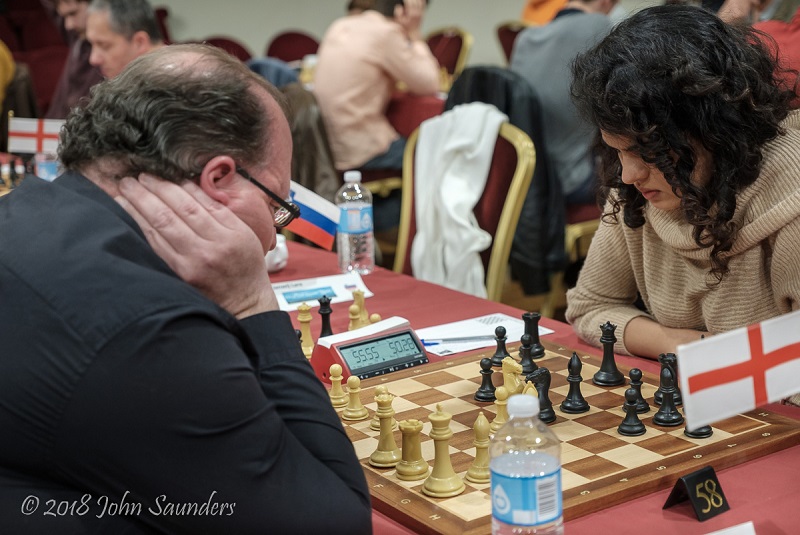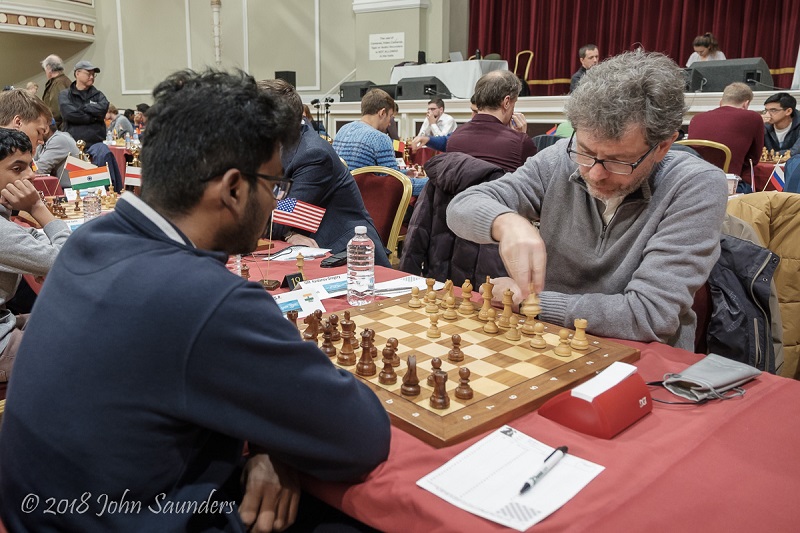Big guns pull out all the stops
As we had been mentioning in previous reports, it is never a good idea to dismiss the strongest players too early in an open tournament. Although none of the ten highest-rated players were part of the leading group after five rounds, three of them won in round six to join the lead. The same happened in lower boards, where most favourites prevailed and are now well in contention for first place.
It seems like the possibility of having a day-off might become a big strategical element when it is included in the tournament regulations — Naiditsch, Kramnik and Anand have as many chances of finishing first as any other in the top of the standings, and they have the advantage of having taken a rest.
On the other hand, a player that is probably not fond of byes is Hikaru Nakamura, who quickly took down Abhijeet Gupta on the second board with the white pieces. The Indian cannot be blamed for a lack of bravery, however, as he gave up a pawn on move 15 looking for some initiative on the open a and b-files. Just like in the previous round, Nakamura faced his opponent's aggression with precision. Things came to a head on move 23:
Hikaru saw well ahead and chose 23.Nb5. The idea behind this move was clarified after 23...Nc2 (forking the white rooks) 24.Bd4 Ne3 25.Bxe3 Rxe3 26.Rf1 Qxe2 27.Qxe2 Rxe2 and Black resigned after White's following response:
The knight fork 28.Nd4 wins a piece — after 28...Re5, 29.f4 leaves the bishop undefended.
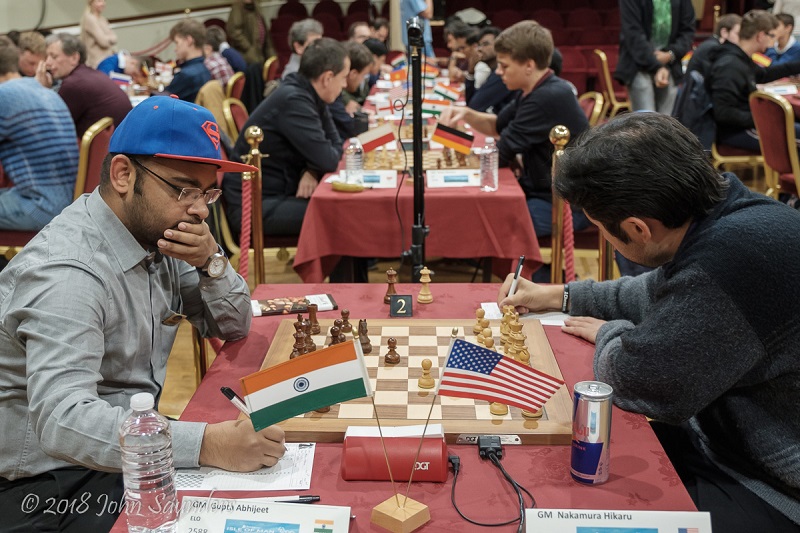
The Superman cap did not help Gupta this time | Photo: John Saunders
A similar story was seen on the next board, where Rinat Jumabayev could not get a second upset in a row — for Gupta, it would have actually been his third — and ended up losing against one of the favourites. The Kazakhstani had been playing accurately, but Maxime Vachier-Lagrave never stopped creating threats against his uncastled king. Jumabayev perhaps went a little too far with his enterprising play on move 33:
 On this DVD GMs Rogozenco, Marin, Müller, and IM Reeh present outstanding games, stunning combinations and exemplary endgames by Alekhine. And they invite you to improve your knowledge with the help of video lectures, annotated games and interactive tests
On this DVD GMs Rogozenco, Marin, Müller, and IM Reeh present outstanding games, stunning combinations and exemplary endgames by Alekhine. And they invite you to improve your knowledge with the help of video lectures, annotated games and interactive tests
33.f4 was a blunder (33.b4 was the way to go), which allowed MVL to show his tactical prowess. Aware of the fact that if White takes the knight on e5 he can take back with the d-pawn and the d4-knight is pinned to the rook on g1, the Frenchman continued with 33...Rxb2. After 34.Nf1 Nxe4 35.fxe5 dxe5, White challenged his rival's central knight with 36.Ng3:
Vachier-Lagrave took the d4-knight, threatening a decisive discovered attack with d3. Jumabayev decided it was time to resign.
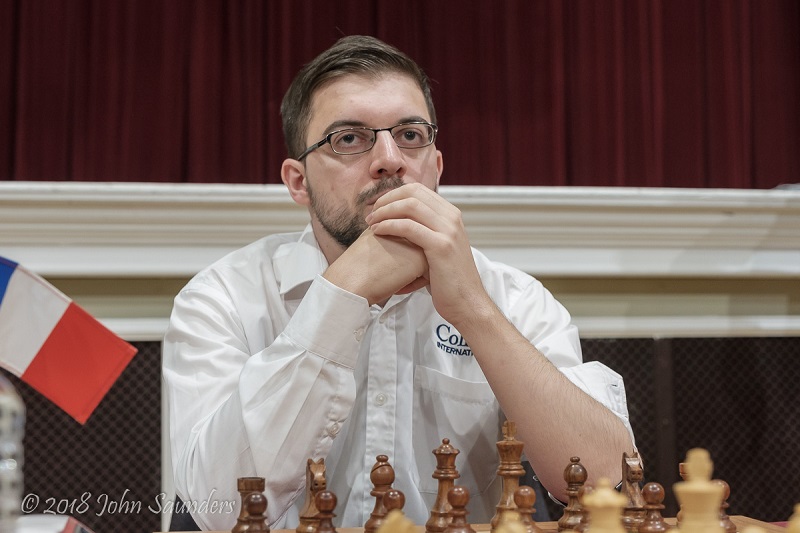
Vachier-Lagrave took back his place in the leading group | Photo: John Saunders
The third player to join the group of leaders was Radek Wojtaszek, who faced the young Rasmus Svane, who had drawn Anand and beaten Gelfand earlier in the event. The German grandmaster allowed his experienced opponent to win a pawn tactically in the early middlegame:
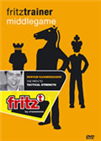 Despite the fact that many books have been written on tactics in chess, many players still find it extremely difficult to recognise tactical patterns and calculate ensuing lines. With this disk the author not only gives a large number of examples of the most different kind, trying to cover as many ideas as possible, but also suggests a method which will greatly help you to see various tactical motives and systemise your calculation.
Despite the fact that many books have been written on tactics in chess, many players still find it extremely difficult to recognise tactical patterns and calculate ensuing lines. With this disk the author not only gives a large number of examples of the most different kind, trying to cover as many ideas as possible, but also suggests a method which will greatly help you to see various tactical motives and systemise your calculation.
Wojtaszek did not miss the chance to simplify into an advantageous position and played 22.Qxf7+, with the idea that after 22...Qxf7 23.Nxf7, if Black takes the knight with 23...Kxf7 White can even add an exchange to his list of material gains with 24.Nd6+, forking the king and the c8-rook. Therefore, Svane played 23...Rf8, but Wojtaszek was already a pawn up — and he went on to show his class. In the final position, it is hard to suggest a move for Black, who is stuck defending all his weaknesses:
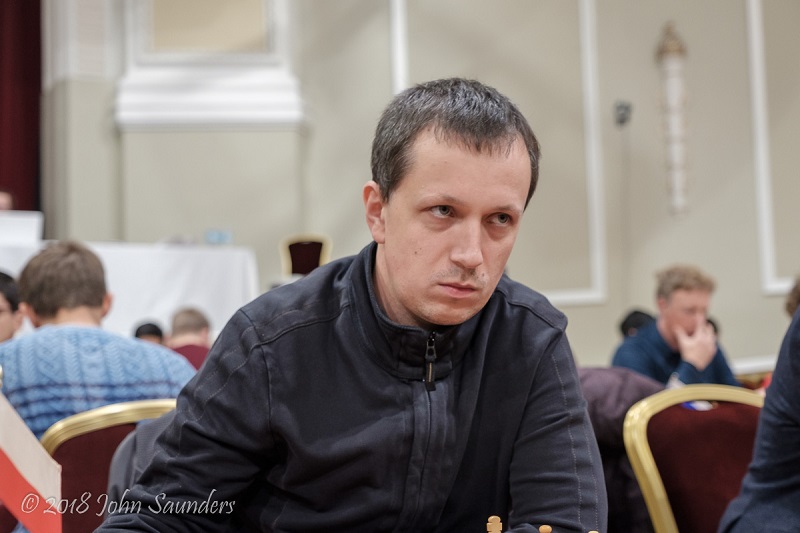
Tenth seeded Radek Wojtaszek | Photo: John Saunders
Two Russian players joined the chasing pack on Thursday and finished their games in style — Vladimir Kramnik and Mikhail Antipov. It is said about the former World Champion that his passed pawns always queen. He had White against Erwin l'Ami and made full use of his strong passers on the d and e-files:
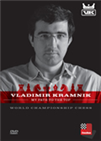 On this DVD Vladimir Kramnik retraces his career from talented schoolboy to World Champion in 2006. With humour and charm he describes his first successes, what it meant to be part of the Russian Gold Medal team at the Olympiad, and how he undertook the Herculean task of beating his former mentor and teacher Garry Kasparov.
On this DVD Vladimir Kramnik retraces his career from talented schoolboy to World Champion in 2006. With humour and charm he describes his first successes, what it meant to be part of the Russian Gold Medal team at the Olympiad, and how he undertook the Herculean task of beating his former mentor and teacher Garry Kasparov.
Kramnik simply gave up his queen by advancing with 33.d7. After 33...Rxb3+ 34.Rxb3 Qd8 35.e7 the Dutch grandmaster stopped the clocks and conceded the defeat. It made for a good-looking final position:
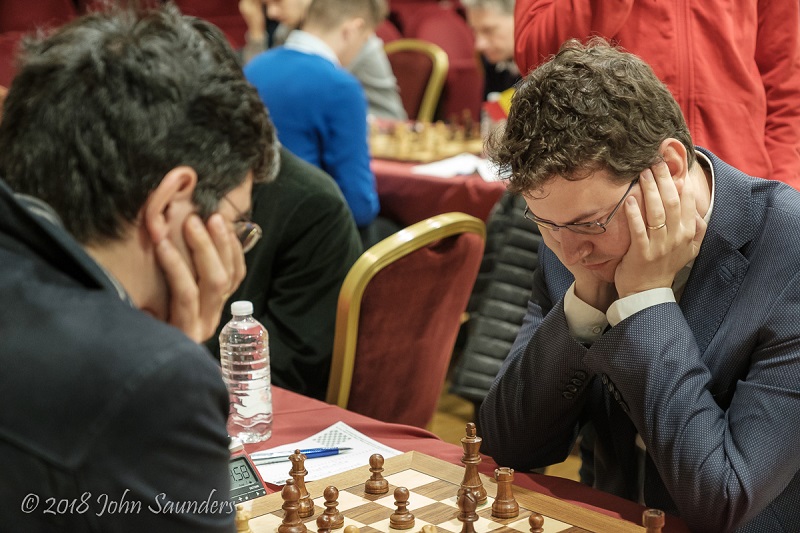
Erwin l'Ami could not stop Kramnik's pawns | Photo: John Saunders
Meanwhile, Antipov inflicted Vidit's second consecutive loss. The Russian had the black pieces and finished his opponent off with a strong deviation:
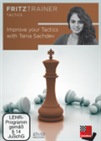 The aim of this course is to help you understand how to make tactical opportunities arise as well as to sharpen your tactical vision - these selected lectures will help to foster your overall tactical understanding.
The aim of this course is to help you understand how to make tactical opportunities arise as well as to sharpen your tactical vision - these selected lectures will help to foster your overall tactical understanding.
Black played 45…Ra7! — the threat is 46...Bf5# mate, and if the white queen moves along the key diagonal with 46.Qc8 or 46.Qe6, Antipov has 46...Rf7, defending the f5-square.
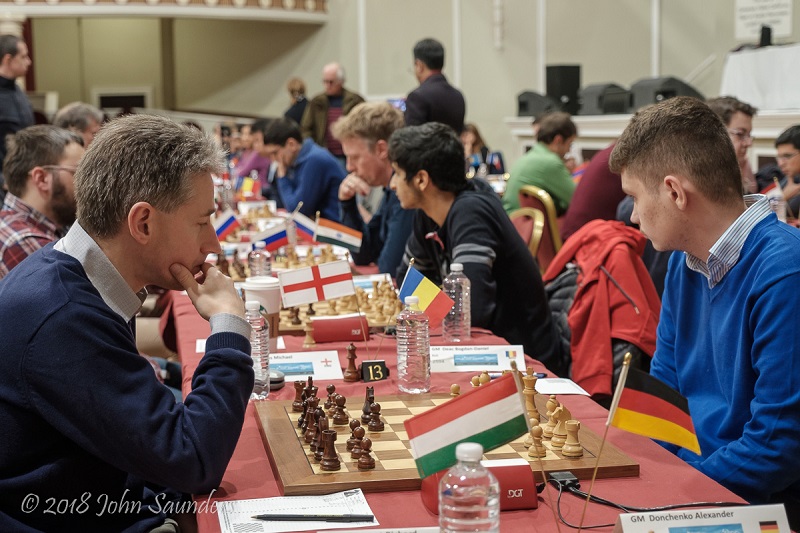
Michael Adams and Mikhail Antipov won on adjacent boards | Photo: John Saunders
Four other 2700-players defeated lower-rated opponents to reach 4/5 and stay within reach of the leaders — Viswanathan Anand, Richard Rapport, Michael Adams and Vladislav Artemiev. Any of them might end up winning the event, despite not having had a good start.
Round seven will feature four match-ups that will face two fellow countrymen against each other — Nakamura will play Xiong on board two; Artemiev will face Kramnik two boards below; Sethuraman will have White against Anand next to the Russians; and Sevian will try to put up a fight against So with the black pieces on board ten.
Round 7 pairings (top 20 boards)
Games from Round 6
Links












